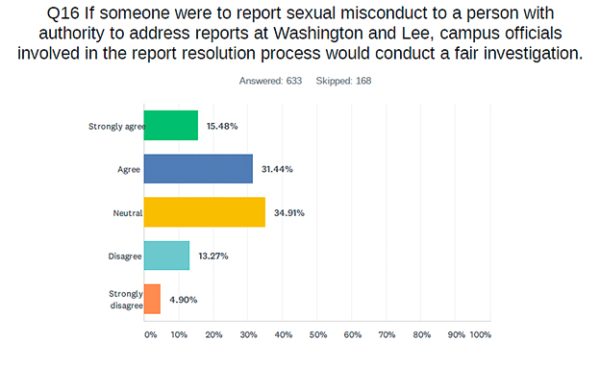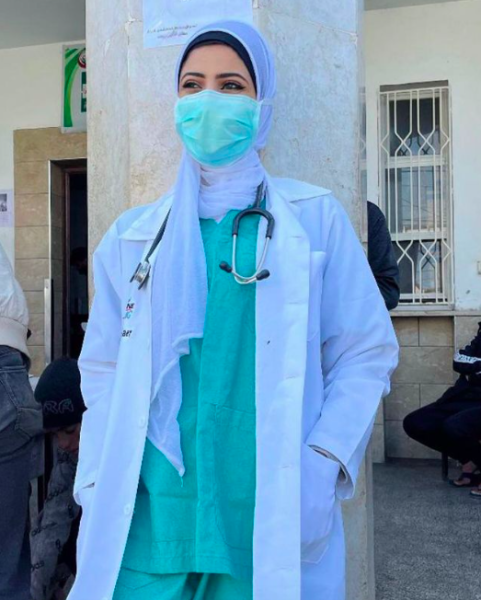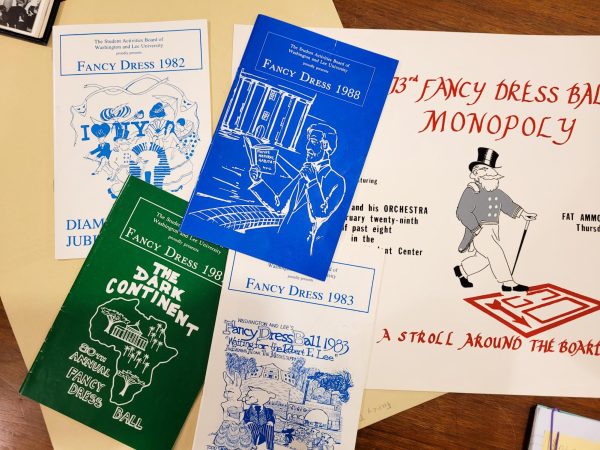Student organization budget discrepancies present challenging year for E.C. funding
November 7, 2017
After some delay, the spring budget allocations for student organizations for the 2017-18 academic year were reduced across the board after some organizations reported incorrect numbers.
Elizabeth Mugo, ‘19, Executive Committee Vice President, said the university business office advised a “catch-up year,” which resulted in delayed allocation.
When student organizations apply for budget allocation, their proposals are required to correctly confirm the numbers in their accounts registered with the university business office. Mugo identified this as a potentially recurring mistake, especially within organizations undergoing leadership transitions.
“I think this is just the year that it ended up having to be figured out,” Mugo said. “It was just very evident that people had not checked their account in a long time.”
Eighty-six percent of the student organization budget is allocated during the spring period, four percent is allocated both during the fall and again during the winter as emergency funding. The remaining funds are held in the student body working reserve, in case of accrued debt or unavoidable situations.
Mugo said this working reserve that serves as a backup fund has been depleted the past few years. The business office, which manages funding, identified these debts and account/proposal discrepancies and advised the Executive Committee to readjust accordingly.
“This year, all together, I think is an anomaly,” Mugo said.
Mugo announced changes to the budget policy at a student organization leadership training on September 26. New organizations can now turn in their applications for official recognition to the Executive Committee on a rolling period. Applications have to be submitted at least one week prior to the next business meeting, which are held in Early Fielding on Mondays at 7:30 p.m.
Mugo offered advice for organizations and upcoming budget allocation periods.
“Based on the recent year we’ve had with the budget, I would advise organizations to have a set treasurer,” she said. “That gives us hard evidence.”
She said the organizations should also keep track of attendance at each meeting and event.
“I feel like that’s just generally a good policy for growth,” she said.
The new fiscal year is June 1 through the second Friday of spring term. Accounts must be settled by then, which will prevent delays in the budget approval and allocation process similar to what occurred this past year.
Mugo also confirmed that the Executive Committee maintains their ability to revoke active status from organizations that are misusing budget policy.
The Student Bar Association (SBA) is responsible for distributing money for the law school student organizations as well as planning parties and special events. The organization received the most funding out of all the university student organizations: $122,000. Lauren Bond, ‘19L, the organization’s treasurer, said this was the same amount they received last year.
“I think this kind of hurt us because of how many new students we have this year,” Bond said.
Bond said that SBA has had to accommodate for an increase of 45 more first-year students (165 students) than the year before (120 students). She said the deficit will impact event venues, food and mileage reimbursement.
“We’re kind of having to downsize what we’re able to do,” she said. “It’s just made things a little more tricky.”
General Activities Board (GAB) is another student organization that receives one of the highest budget allocations for the undergraduate school. The concert-planning organization requested $120,000 this year and received $102,570 after finishing out last year with an allocation of $107,000 and no leftover funds.
In the past, the organization set up a fall, winter and spring show, but GAB co-chair Mary-Michael Teel, ‘18, said this isn’t feasible with budget cuts.
“We don’t even have enough money to do our two big shows now,” she said. “It’s kind of tough because GAB is for everyone.”
Last year, the organization set up a T-Pain concert on campus in the spring.
“That’s the caliber of artists people are expecting,” Teel said. “It’s going to be hard to pull off a T-Pain level show with this budget.”
She also said that GAB is considering applying for emergency funding but they aren’t confident they will receive it. As a backup, the organization hopes to partner with other organizations to make up the difference.
Mugo confirmed this as a good idea.
“I think co-sponsorship is something that not enough people take advantage of,” she said. “It gets different people talking.”
This past year, the Student Association for Black Unity (SABU) received the Americus White Award for Best Student Organization, presented at the university’s Leadership Education and Development (LEAD) Banquet. The organization requested $5,450 and received $4,140 in allocation for the 2017-18 school year.
Treasurer Garrett Clinton, ‘20, said that SABU received more money this year than last year, but it wasn’t as much as they expected.
“We felt like this was the year we were supposed to get what we asked for, but didn’t,” he said.
Clinton said the organization finished last year with $2,000 in leftover funds, which was used for t-shirts.
Other cultural organizations on campus include Pan-Asian Association for Cultural Exchange (PAACE) and Latino Student Organization (LSO), which received $2,576 and $125 for this year’s allocation, respectively.
Mugo accredited these differences in funding to organizational performance as well as the number of events held and how much of the student body attended. LSO was also founded at the beginning of the 2016-17 school year.
“In a logical way, it’s understood that new organizations are going to receive less funding,” Mugo said.
Another new organization is Quiz Bowl, a national trivia competition. President Luke Basham, ‘20, applied for recognition during the fall of 2016 application period and initially received $330 for his organization of four founding members.
Basham said he requested $865 during this past spring allocation period and received $460.
“What I asked for in the budget was the minimum necessary to attend six tournaments throughout the year,” he said. “What I got was a shade above half of that.”
But Basham is hopeful that he’ll receive more after the fall of 2017 budget allocation period after an increase in membership and a year under the organization’s belt.
“I’m optimistic that with more members, more communal interest, we’ll become more apparent,” he said. “I think we’re going to have a lot of success this season and I hope that the success will attract more involvement and recognition for our organization.”












